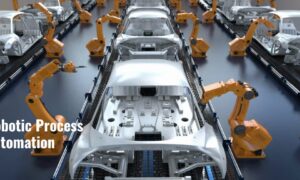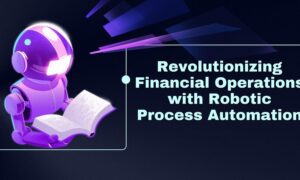RPA stands for robotic process automation. What is robotic process automation? What types of repetitive jobs is it capable of handling? Here is a primer for IT and business professionals, as well as anybody else who needs to debunk the idea.
First things first: Robotic process automation doesn’t really include any robots.
Thankfully, robotic process automation (RPA) doesn’t require anything of the kind, with the possible exception of efficiency. This automation software doesn’t actually really use any robots.
Instead, software robots operating on a real or virtual machine constitute the “robot” in robotic process automation. RPA is a type of business process automation that enables anyone to write a set of instructions for a robot or “bot” to complete. RPA bots are able to emulate the majority of computer-human interactions in order to complete a huge number of flawless jobs quickly and in large quantities.
That kind of automated technology is intended to seem somewhat dull, especially in comparison to the Hollywood robots. The main goal of RPA is to automate some of the most boring and repetitive computer-based operations and business procedures. Consider activities like copying and pasting or transferring files from one place to another.
RPA automates routine tasks that formerly required human intervention—often a lot of it done repetitively and laboriously. RPA also promises to increase organizational efficiency in this way.
Does your procedure fit with RPA?
It is a separate tale for another day to evaluate your internal processes and workflows that would be suitable candidates for RPA. Having said that, there are some fundamental standards worth mentioning in this context since they might provide you and your team a clearer understanding of what RPA is and how it could be effective. These criteria might also be useful as you talk about RPA installation with non-technical co-workers throughout the business. Any operations that need a lot of repetitive data labor from employees fall under one of the broad categories.
Consider using the following four basic check-offs to identify if RPA fits your needs:
- The procedure must follow set rules.
- The procedure must have a trigger or be performed at regular intervals.
- The process’s inputs and outputs must be well stated.
- The assignment should be large enough.
How can RPA be used?
Let’s look at examples of business processes and use cases:
Demonstrate to non-IT folks how RPA may minimize tedious labor in their daily occupations. RPA should be easier to explain and promote outside of IT than other concepts like serverless or microservices, which are more difficult to simplify for non-technical individuals. The definitions listed above address this. Additionally, it may be simpler to explain to non-IT individuals how RPA deployments might improve their daily lives by removing tedious tasks from the workplace. (The same job would be more difficult when attempting to convey to a field service technician the advantages of, example, containerization.)
Let’s look at data-intensive procedures as a suitable place to start. There is a wide range of operations that may be performed on data, including receiving, processing, collecting, correcting, creating, and so on. Consider the monotonous procedures in departments like finance, customer service, and human resources.
Think about how much labor there is in a field like finance: Just handling the receivables and payables alone has often required a lot of manual, repetitive labor from specialized employees.
Customer service and human resources are two examples of typical business divisions that use repetitive, rule-based, data-intensive operations. Particular sectors, including the insurance and financial services sectors, also suit the bill and can benefit.



































